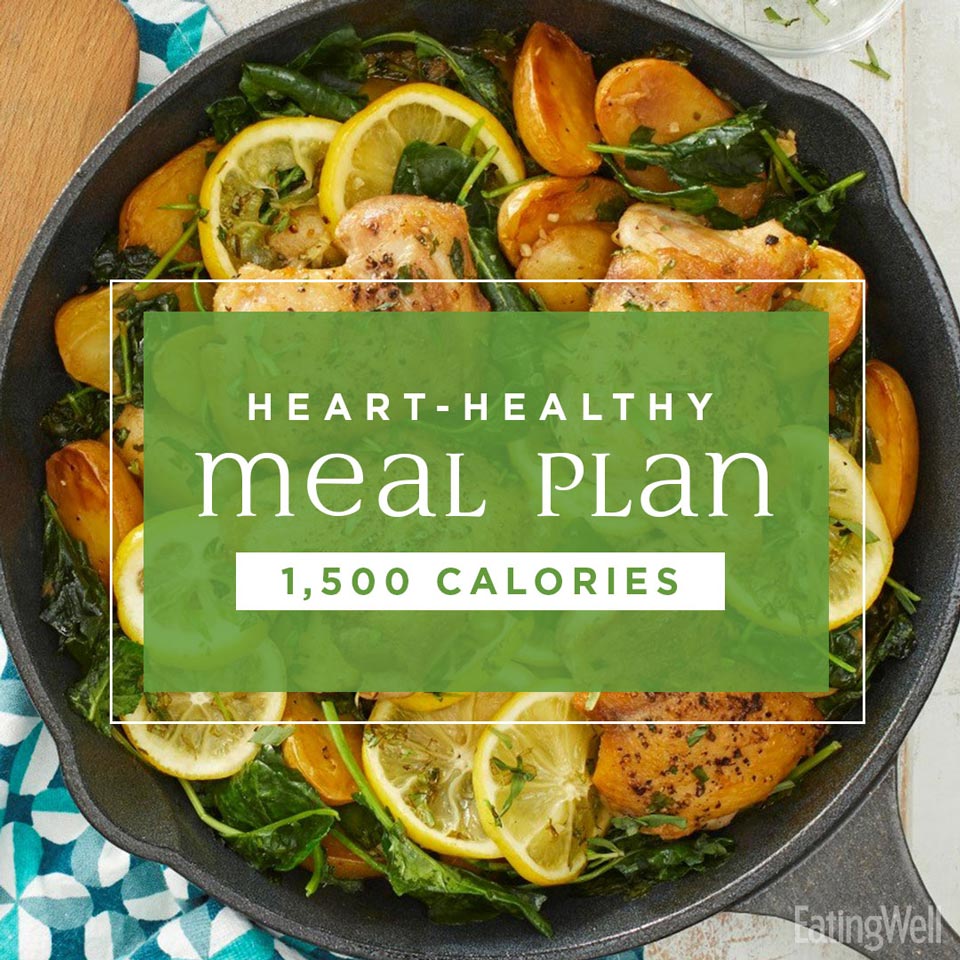
The American Heart Association recommends following a diet that is low in fat and high in vegetables. Plaque can buildup in the veins and arteries by eating a few of these foods, as well as animal fat from meat. Also, eating nutrient-poor food, such as fried foods, can increase your risk for developing heart disease. People with heart disease should avoid eating high amounts of animal fat and high levels trans fats.
The American Heart Association's recommendations for healthy eating do not require drastic changes. Instead, the American Heart Association recommends eating more healthy foods and limiting unhealthy ones. These guidelines encourage people who are interested in a healthy diet to avoid high levels of cholesterol and saturated fats. They also recommend regular physical activity. The American Heart Association has a list of dietary guidelines that can help you reduce your risk of getting heart disease.

This diet gives you very specific instructions for your breakfast, lunch, or dinner. The first day of the diet features three ounces of lean meat with vegetables and one egg. The second day's diet includes toast with five saltine crackers along with 1 cup cottage cheese. Following these guidelines will help you to reduce your risk of developing heart disease and high blood pressure. AHA recommends that you limit added sugar to no more than 1 teaspoon per meal.
Although the recommendations for heart health are broad, the AHA recommends that you include more fruits and vegetables than you'd normally eat. Include dark green and deep orange fruits such as peaches, carrots and spinach in your daily meals. To ensure that they are heart-friendly, you should look for products with the "Heart Check" label. Avoid secondhand smoking, as it can increase your chances of developing heart disease.
According to the American Heart Association, eating more fruits and vegetables is a good idea. This diet is low on calories and saturated fats. AHA has reviewed all available research and developed its recommendations. These guidelines will help you to achieve good heart health. The best way to follow this diet is to make a few modifications. AHA has also made some adjustments to their dietary guidance. For instance, someone may need to consume more fruits and veggies than they would normally.

The American Heart Association recommends that saturated fat be limited to 5% to 6 percent of your daily calories. This amounts to about 13 grams of saturated oil per day. A balanced diet should contain lean protein, as well as a wide range of fruits and vegetable. As it contains high amounts of sodium, alcohol should not be consumed more than once or twice a day. You need to ensure you're getting your daily doses antioxidants.
FAQ
How can I live my best everyday life?
Finding out what makes your heart happy is the first step to living a fulfilled life. Once you have a clear understanding of what makes you happy you can go backwards. Asking other people how they live their best lives every day is also a good idea.
Dr. Wayne Dyer's book "How to Live Your Best Life" is also available. He discusses happiness and fulfillment in every aspect of our lives.
What is the difference between fat and sugar?
Fat can be a source of energy that is obtained from food. Sugar is naturally found in fruits and veggies. Both fats and sugars provide the same number of calories. But fats are twice as calories as sugars.
Fats are stored in your body and can cause obesity. They cause cholesterol buildup in arteries which may lead to heart attacks and strokes.
Sugars provide instant energy and are rapidly absorbed by the body. This causes blood glucose to rise. High blood glucose levels can pose a danger because they increase the chance of developing type II Diabetes.
These are 5 ways you can live a healthy and happy life.
Living a healthy lifestyle involves eating right and exercising regularly. Good eating habits include avoiding processed foods, sugar, unhealthy fats, and avoiding junk food. Exercise helps burn calories and strengthens muscles. Sleeping well improves concentration and memory. Stress management is a way to reduce anxiety levels and depression. Fun keeps us vibrant and young.
How often should I exercise
Fitness is key to a healthy lifestyle. However, there isn't a set amount of time you must spend working out. Finding something you enjoy is key. Stick with it.
When you exercise three times per week, aim for 20-30 minutes moderate intensity. Moderate intensity is when you still have to breathe hard after the workout. This type works out burns around 300 calories.
For those who prefer to walk, you can go for 10-minute walks four times a week. Walking is low-impact and easy on the joints.
You can also run for 15 minutes, three times per week. Running can help you burn calories and to tone your muscles.
You can start slow if you're new to exercise. Begin by only doing 5 minutes of cardio five times per week. Gradually increase the amount of cardio you do until you reach your goal.
Statistics
- Extra virgin olive oil may benefit heart health, as people who consume it have a lower risk for dying from heart attacks and strokes according to some evidence (57Trusted Source (healthline.com)
- According to the Physical Activity Guidelines for Americans, we should strive for at least 150 minutes of moderate intensity activity each week (54Trusted Source Smoking, harmful use of drugs, and alcohol abuse can all seriously negatively affect your health. (healthline.com)
- The Dietary Guidelines for Americans recommend keeping added sugar intake below 10% of your daily calorie intake, while the World Health Organization recommends slashing added sugars to 5% or less of your daily calories for optimal health (59Trusted (healthline.com)
- This article received 11 testimonials and 86% of readers who voted found it helpful, earning it our reader-approved status. (wikihow.com)
External Links
How To
What does the "vitamins” word mean?
Vitamins are organic compounds found naturally in food. Vitamins are essential for our bodies to absorb nutrients from the foods we eat. Vitamins are not made by the body, so they must be obtained through food.
Two types of vitamins exist: water-soluble vitamin and fat-soluble vitamin. Water-soluble vitamins dissolve quickly in water. Vitamin C,B1(thiamine), B2 (2riboflavin), and B3 (3niacin), as well as vitamin C,B1, B2 (riboflavin), and B3 (niacin), vitamin B6 (pyridoxine), vitamin folic acid (biotin), pantothenic, and choline are examples. Fat-soluble vitamins can be stored in the liver or in fatty tissue. Vitamin D, E, K and A are some examples.
Vitamins can be classified according to biological activity. There are eight major groups of vitamins:
-
A - Essential for healthy growth and health maintenance.
-
C - vital for proper nerve function, and energy production.
-
D - essential for healthy bones, teeth, and gums.
-
E - needed for good vision and reproduction.
-
K - Required for healthy nerves and muscles.
-
P – vital for building strong bones.
-
Q - Aids in digestion and absorption.
-
R – Required for the formation of red blood vessels.
The recommended daily allowance for vitamins (RDA) varies based on gender, age, and physical conditions. The U.S. Food and Drug Administration (FDA) sets the RDA values.
For example, the RDA for vitamin A is 400 micrograms per dayfor adults 19 years or older. Pregnant mothers need 600 micrograms per days because it is vital for the development and growth of their baby. Children ages 1-8 require 900 micrograms per day. Children under 1 year old require 700 micrograms daily, while infants over one year old need 500 micrograms every day. This decreases between 9 and 12 months.
Children aged between 1-18 years require 800 micrograms of sugar per day, while overweight children need 1000 micrograms. Children who are underweight receive 1200 micrograms every day to meet their nutritional requirements.
Children ages 4-8 years who have been diagnosed with anemia need 2200 micrograms per day of vitamin C.
Adults over 50 years of age need 2000 micrograms per day for general health. Women who are pregnant or breastfeeding need 3000 micrograms per day due to increased nutrient requirements.
Adults over 70 require 1500 micrograms each day, since they lose around 10% of their muscle mass every decade.
Women who are pregnant, nursing or breastfeeding need more than the RDA. Pregnant mothers need 4000 micrograms per daily during pregnancy and 2500 after giving birth. Breastfeeding mothers need 5000 mg per day when breastmilk is being produced.